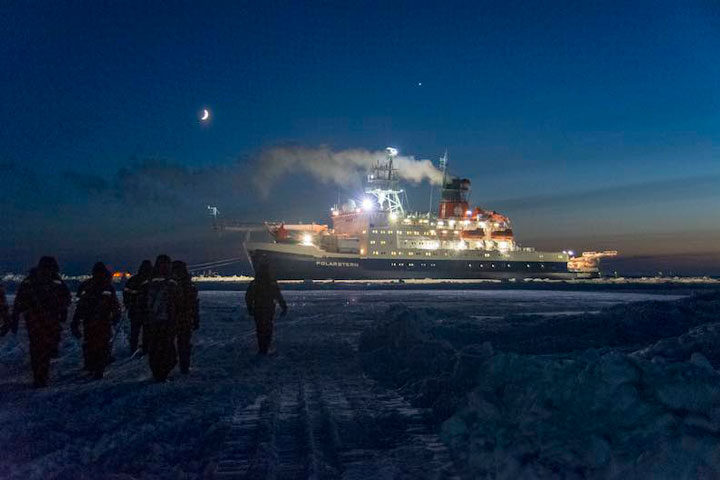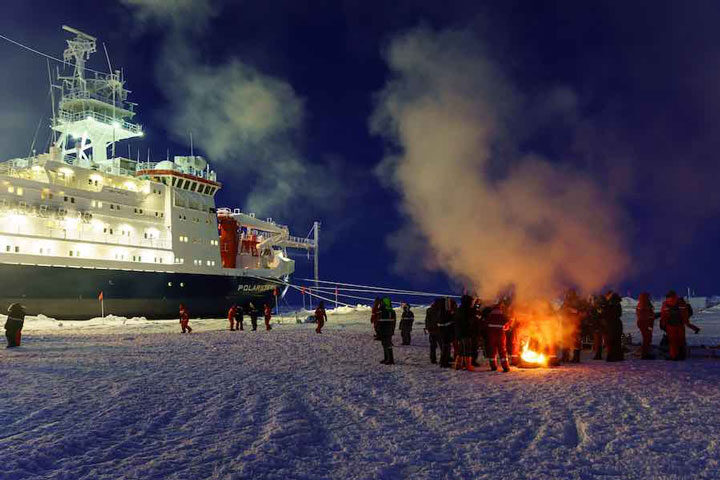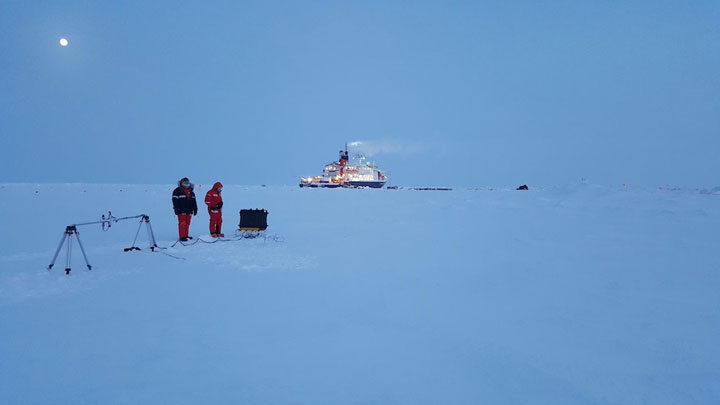
The MOSAiC Leg 3 team is officially on board Polarstern, and science activities have quickly begun.
The first few days on board were filled with handover activities from the previous leg of the expedition. Leg 3 scientists met with members from leg 2 to get a general introduction to the instruments, experiments, and life on the MOSAiC ice floe. Given that leg 2 was on Polarstern since late December, they truly are experts in the scientific activities occurring out on the ice.
During the handover, I met with members of the leg 2 ice team and visited different sites around the floe where most of my work will take place. Since it is my first time on Polarstern, I was also shown where different labs and workspaces are located, where to find tools and instruments to take out into the field, and, perhaps most importantly, where the coffee machine is! These days were invaluable for preparing the leg 3 members for work, and even more important to ensure that MOSAiC continues to run smoothly with a new team at the helm.
After the handover, it was time to say farewell to leg 2. We sent them off in true ‘Arctic expedition’ style with a gathering out on the sea ice between the two ships. All members from the science teams as well as the crews from both the Polarstern and the Kapitan Dranitsyn were invited for bonfires, hot tea, and group photos. The next morning, Kapitan Dranitsyn left on its return voyage to Tromsø, and leg 3 was left alone on Polarstern.

It didn’t take long for us to get started. The morning of the Dranitsyn departure, some teams already set out onto the ice to take measurements. I was working with another member of the ice team to construct a radiation station that we deployed on the ice a few days later. This type of station holds a few instruments that detect the amount of solar radiation both above and below the sea ice. It was necessary to deploy these instruments early in the leg, so that they would be operational for the first sunrise of the year. So far, we have been in a state of constant twilight – a red-orange sky for most of the day. In a few days, the sun will rise above the horizon for the first time in 2020. With this new station, we will now be able to measure the amount of solar energy that reaches (and penetrates through) the sea ice.

It has been extremely busy since leg 2 departed, but everyone is excited to be working on the ice. Here’s to a successful leg 3!



